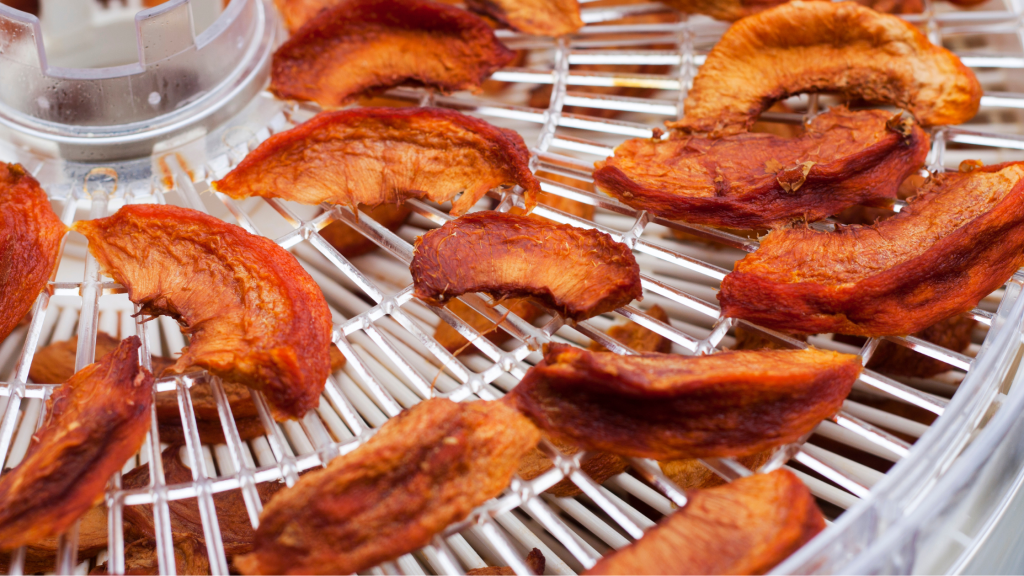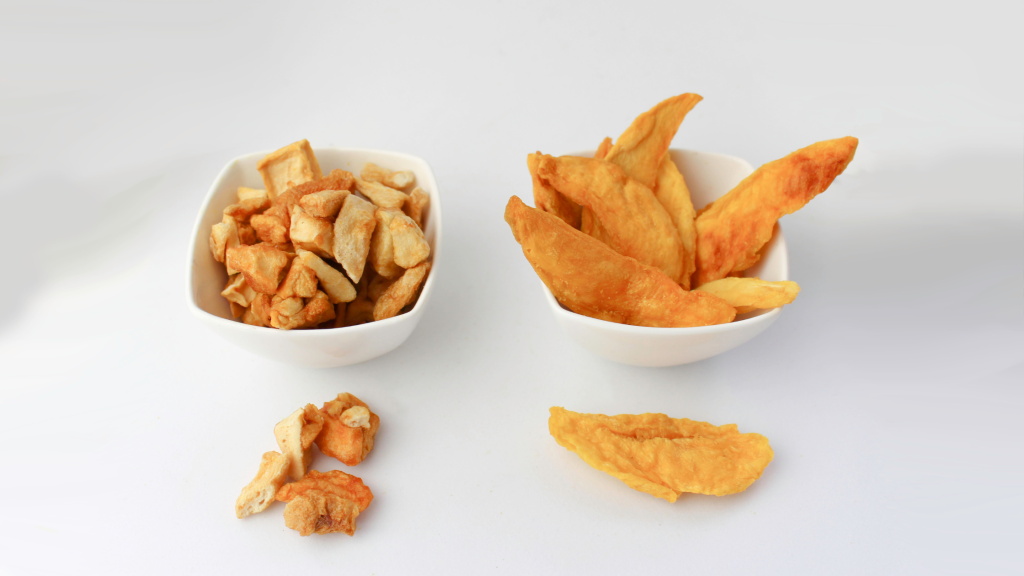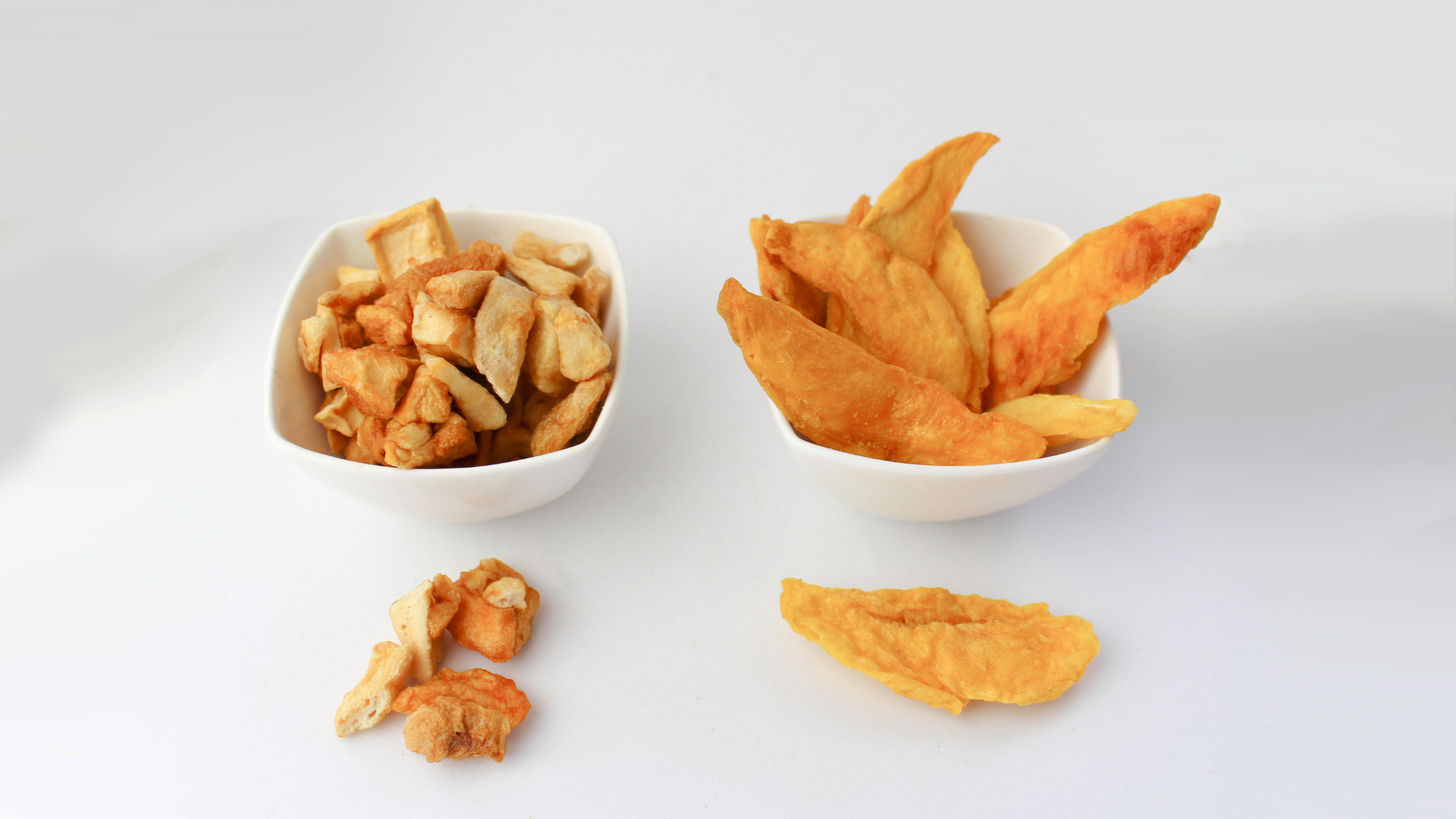Freeze-Drying vs. Dehydrating: What’s the difference?
When it comes to preserving food for longer shelf life, better nutrition, and convenience, two methods dominate the conversation: freeze-drying and dehydrating. Whether you’re a food manufacturer, product developer, or just passionate about food innovation, understanding the differences between these methods is key to choosing the right approach for your needs. Let’s break down how each process works, what it means for shelf life, nutrition, texture, and cost, and why new drying technologies like microwave dehydration are changing the game for commercial food drying.

How the processes work?
Freeze-drying is a multi-step process that begins by freezing food solid. Once frozen, the food is placed in a vacuum chamber where pressure is lowered and gentle heat is applied. This causes the ice in the food to sublimate (turning directly from solid to vapor) without passing through a liquid phase. The result is food that retains its original shape, color, and most of its nutrients.
Dehydrating uses heat and air flow to evaporate water from food. This can be done in a commercial dehydrator, oven, or even the sun. The process is simpler and less expensive but exposes food to higher temperatures, which can impact sensitive nutrients and alter texture.
How long does each method last?
One of the biggest advantages of freeze-drying is shelf life. By removing up to 99% of moisture, freeze-dried foods can last 15 to 25 years when stored properly in airtight containers with oxygen absorbers. This makes freeze-drying the go-to method for emergency food, outdoor meals, and long-term storage.
Dehydrated foods, on the other hand, typically have a shelf life of 1 to 5 years, depending on storage conditions and the type of food. Dehydration removes 90–95% of moisture, which is enough to slow spoilage but not enough to prevent it entirely over decades.
What gets preserved?
Freeze-drying is widely recognized for its ability to preserve nutrients. Because the process uses low temperatures, it retains about 97% of vitamins, minerals, and enzymes, making the final product nearly as nutritious as fresh food. This is especially important for heat-sensitive nutrients like vitamin C and many B vitamins.
Dehydrating, which relies on higher temperatures, can destroy some of these sensitive nutrients. While most minerals and fiber are retained, dehydrated foods may lose a significant portion of their vitamin content. For short-term storage or snacking, this may not be a dealbreaker, but for long-term nutrition, freeze-drying has a clear edge.
Texture and taste
Freeze-dried foods are known for their light, airy texture and ability to quickly rehydrate to their original form. Fruits, vegetables, and even meats maintain their shape, color, and flavor, making them ideal for dried fruit snacks, instant soups, or ready-to-eat meals.
Dehydrated foods often shrink and become chewy or leathery. While this can be desirable for snacks like jerky or dried fruit, it doesn’t always work for foods that need to be rehydrated for cooking. Dehydrated foods also tend to have a more concentrated flavor due to water loss, but the texture is rarely the same as the original.

Cost and energy use
Freeze-drying equipment whether a commercial freeze dry machine or an industrial freeze dryer, represents a significant investment. The process is also energy-intensive, requiring both freezing and vacuum operation over many hours. This higher cost is offset by the quality, shelf life, and nutritional retention, but it may not be practical for every application.
Dehydrators are simpler, less expensive, and use less energy. For manufacturers focused on volume production of snacks or ingredients where long shelf life and maximum nutrition aren’t as critical, dehydration is often the preferred choice.
Visual Comparison Table
| Feature | Freeze-Drying | Dehydrating |
|---|---|---|
| Moisture Removal | Up to 99% | 90–95% |
| Shelf Life | 15–25 years | 1–5 years |
| الاحتفاظ بالمغذيات | ~97% (including vitamins, enzymes) | 60–75% (loss of heat-sensitive vits) |
| الملمس | Light, airy, rehydrates well | Chewy, leathery, shrinks |
| Taste | Close to fresh, mild | More concentrated, sometimes altered |
| Energy Use | High | Lower |
| Equipment Cost | High (freeze dryers) | Lower (dehydrators) |
| Best Use | Long-term storage, premium products | Snacks, short-term use |
Where Microwave Drying fits in?
Microwave drying equipment, including EnWave’s patented REV™ technology, brings a new dimension to food dehydration. By combining vacuum pressure with targeted microwave energy, this approach accelerates drying while preserving nutrients, color, and flavor, often matching or exceeding the quality of freeze-dried foods at a fraction of the time and energy cost. For manufacturers looking to innovate in food tech, commercial food drying, or product development, microwave dehydration offers a compelling middle ground: faster processing, better shelf life, and high nutritional value without the steep investment of traditional freeze-drying.
Freeze-drying and dehydrating both have unique strengths, and the right choice depends on your goals, whether it’s maximum shelf life, nutrition, texture, or cost efficiency. As food innovation continues, new technologies like microwave-assisted drying are helping manufacturers bridge the gap, offering speed, quality, and flexibility for a changing market.
If you’re exploring the best drying technology for your next product, or want to learn more about how microwave dehydration can support your business, reach out to EnWave. Our team is ready to help you bring better products to market, faster.
Further Reading
- Freeze Drying VS. Dehydration – Commercial Dehydrators
- Freeze Dried vs Dehydrated Food: Key Differences – Mountain House
- Freeze Dryer vs Dehydrator: A Complete Comparison Guide – SED Pharma
- Difference between dehydration and freeze-drying – Barnalab
- Freeze Drying vs Dehydrating – Harvest Right
- EnWave – Freeze Drying vs Microwave Drying


